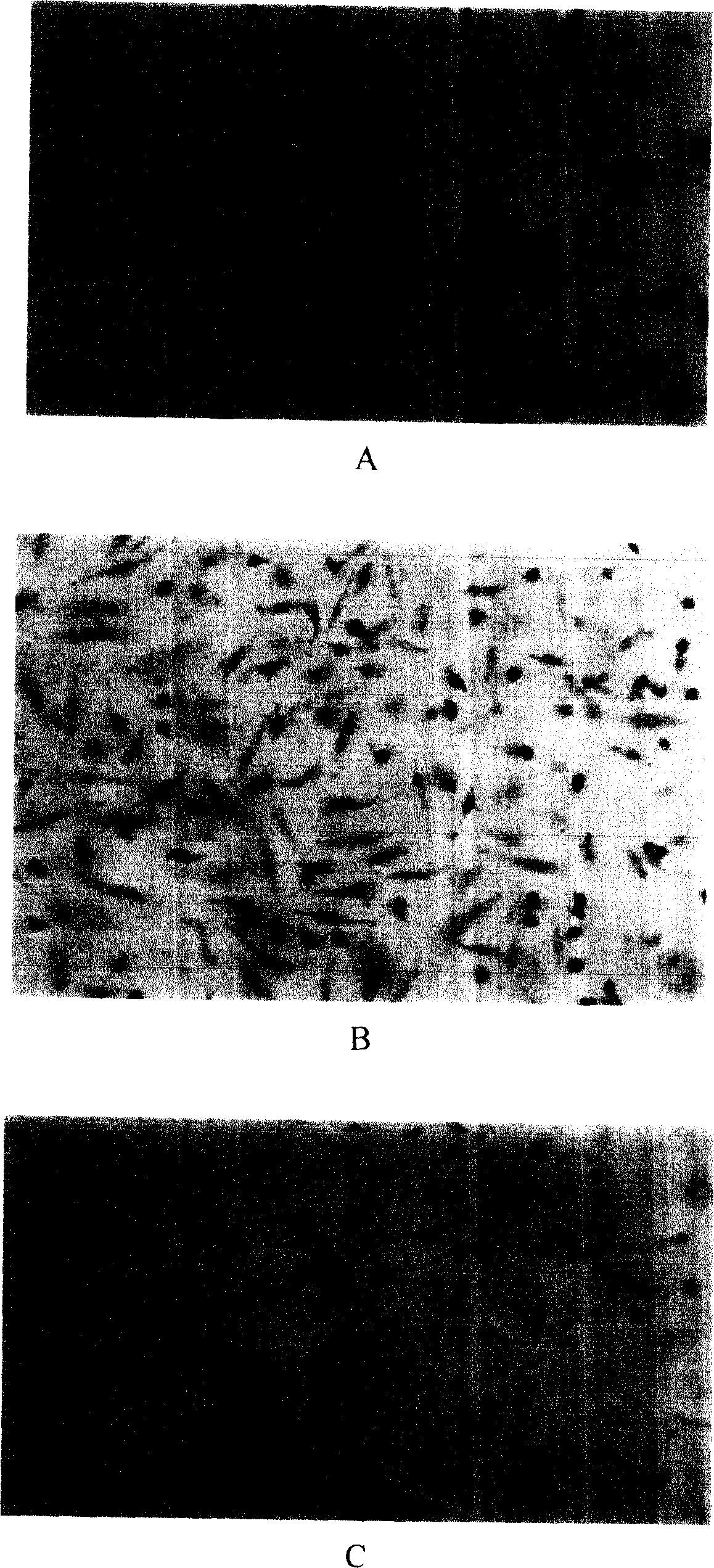Interference RNA miniplasmid of hypoxia induction factor
A hypoxia-inducible factor and small interference technology, applied in the field of genetic engineering, can solve the problems of poor RNA chain stability, unfavorable transfection efficiency, easy degradation, etc., and achieve stable and high-efficiency expression
- Summary
- Abstract
- Description
- Claims
- Application Information
AI Technical Summary
Problems solved by technology
Method used
Image
Examples
Embodiment 1
[0026] Example 1 Preparation of siRNA-HIF-1α
[0027] Design of target gene HIF-1α siRNA sequence
[0028] Open the siRNA design tool http: / / www.ambion.com / techlib / misc / siRNA_finder.html, the CDS of human hypoxia-inducible factor 1α (HIF-1α) gene (the CDS (29-2509) of HIF-1α sees SEQID NO: 4) Paste in the input box, select end with TT, and get a series of output sequences of 21 bases (nt) after submission, select 1 to 2 sequences, and confirm that there is no significant similarity with other genes by Blast test , converting the output sequence into two insertion sequences, the sense strand and the antisense strand.
[0029] The selected sequence is as follows:
[0030] The obtained siRNA-upstream sequence is (SEQ ID NO: 1):
[0031] 5′-TGTGAGTTCGCATCTTGATTTCAAGAGAATCAAGATGCGAACTCACATTTTTT-3′
[0032] Among them, TGTGAGTTCGCATCTTGAT is the obtained upstream segment; TTCAAGAGA is a specific loop ring; ATCAAGATGCGAACTCACA is the palindrome structure of the upstream segment. ...
Embodiment 2
[0045] Example 2 Detection of siRNA-HIF-1α
[0046] By electroporation, exogenous siRNA-HIF-1α was transfected into endothelial progenitor cells, and compared with the non-transfected siRNA group as follows.
[0047] 1. Genetic testing
[0048] After 3 days of culture, the cells were transfected with plasmids, incubated in normoxia and hypoxia for 20 hours, and then RT-PCR and β-actin were quantified. The electrophoresis results are shown in Figure 2, in which, lane 1 is a 100bp marker; lanes 2, 4, and 6 are normoxia; lanes 3, 5, and 7 are hypoxia; lanes 2-3 are not transfected cells; lanes 4-5 are pEGFP empty Plasmid-transfected cells; lanes 6-7 are SiRNA-HIF-1α-transfected cells. A is HIF-1α electrophoresis 20 hours after transfection, B is VEGF electrophoresis 20 hours after transfection. The results showed that: HIF1αCDNA exists in both normoxia and hypoxia, and its expression has nothing to do with oxygen concentration. SiRNA interference inhibits HIF1α; VEGF expressio...
PUM
 Login to View More
Login to View More Abstract
Description
Claims
Application Information
 Login to View More
Login to View More - R&D
- Intellectual Property
- Life Sciences
- Materials
- Tech Scout
- Unparalleled Data Quality
- Higher Quality Content
- 60% Fewer Hallucinations
Browse by: Latest US Patents, China's latest patents, Technical Efficacy Thesaurus, Application Domain, Technology Topic, Popular Technical Reports.
© 2025 PatSnap. All rights reserved.Legal|Privacy policy|Modern Slavery Act Transparency Statement|Sitemap|About US| Contact US: help@patsnap.com



